The post Introducing the OneDose and ESO EHR integration appeared first on ESO.
]]>Both Hinckley Medical and ESO Solutions are committed to using data and technology to empower EMS agencies to provide the best possible outcomes for patients in their community, which makes this integration a natural next step for both companies.
By integrating with OneDose, clinicians using EHR will now be able to dose and document all patient treatments, interventions, and protocol adherence directly into ESO. This will allow critical NEMSIS (National EMS Information System) data – such as patient weight, medications, and treatment – to automatically sync, eliminating duplicate documentation and ensuring precision.
OneDose is designed to eliminate the cognitive load of having to calculate dosing in high stress situations by providing all medication and equipment necessary in just a click, along with timestamped treatments for more accurate record keeping.
In addition to real-time documentation, customizable protocols, and in-app notifications, here are some key OneDose benefits coming to ESO EHR:
- Instant calculation of necessary medications, equipment, and more
- Comparison of pre-scene estimates with point-of-care actual weights
- Full access to your organization’s protocol
- Comparison of estimated versus actual weights of medication dosages
- Automatic patient interaction history tracking
- One-stop-shop for management of medication calculations, equipment sizes, and provider guidelines
- Updated push protocols to team members with receipt verifications
These new benefits combined with ESO EHR’s concise documentation, easy-to-read dashboards, and quickly accessible patient records will allow providers to keep their focus on their patient while accessing vital patient information and specialty forms that inform care in real time.
To learn more about the benefits of this powerful integration, check out the full press release from OneDose.
To learn more about ESO EHR and how it can improve critical data capture for your team, check out the product page.
The post Introducing the OneDose and ESO EHR integration appeared first on ESO.
]]>The post ESO Auto-Generated Narratives: Tech that follows your lead appeared first on ESO.
]]>“At ESO, we are committed to being responsible, ethical, and transparent as we walk through this artificial intelligence journey together.”
– Dr. Brent Myers, Chief Medical Officer at ESO
Filling out patient care reports has always been an important, yet time-consuming, part of an EMS provider’s shift. Every field filled in. Every note written. And then, the narrative – summarizing the whole event in a readable, detailed story.
With ESO, that story writes itself (when you ask it to).
This month, ESO released the much-anticipated Auto-Generated Narrative feature to ESO Electronic Health Record (EHR) customers, transforming documentation in first response as we know it. By drawing directly from structured data already entered in the record, ESO’s Auto-Generated Narrative writes a full narrative summary ready for review.
EMS organizations have the power to opt into this new feature, helping their crew complete reports faster – without compromising accuracy or control.
“The efficiency improvement we’ve seen with the ESO Auto-Generated Narrative has been significant, saving about 20 minutes per report. From a quality management perspective, it simplified the administrative function. From the crew’s side, it’s obvious it shortened their documentation time. They’re still reviewing every narrative, and so far, I don’t think we’ve had one that hasn’t been touched. This feature is a game changer that paints an accurate picture of the care they provided.”
– Jeff Sadtler, Chief of EMS and Fire Services at West County EMS and Fire Protection District
It’s already saving time and making an impact.
ESO’s Auto-Generated Narrative was beta tested by about 50 EMS organizations across the country. In testing, this feature reduced total documentation time by up to 80%. On average, crews also saw a 30% drop in time to lock a patient record.
This capability, which is intentionally optional, can now be enabled organization-wide for EHR customers at no additional cost. Once activated, providers complete the chart as usual, click a button to generate the narrative, and finalize it after making any needed edits.
If you’re already an ESO EHR customer, check out our quick-start guide for instructions on how to activate Auto-Generated Narrative.
Embracing AI with intention
Still in its infancy, AI has already proved itself to be a powerful, efficient tool innovating various industries. At ESO, we are focused on applying it thoughtfully, in ways that help those on the front lines. That’s why Auto-Generated Narrative is designed with transparency, reliability, and provider control in mind.
The automated narrative draft is created based only on what has been captured discretely into the chart. Providers retain full control of the narrative throughout the process.
Auto-Generated Narrative is not just automation for the sake of it – it’s a direct response to how our customers work and what they need: more time for patient care, fewer hours spent documenting it, and confidence that records are complete, consistent, and accurate.
What you should know about ESO Auto-Generated Narrative
- Available now for all ESO EHR customers at no additional cost
- Accessible in EHR iOS, EHR Windows mobile and EHR Web
- Activated by your organization’s admin in settings
- Includes an inline prompt for providers to review and edit the draft before finalizing
Ready to auto-generate your patient care narratives?
Auto-Generated Narrative is just one of ESO EHR’s new innovative features aimed at empowering first responders in better caring for their communities. New features such as Critical Care workflows and the recently released Longitudinal Record feature support EMS organizations in alternative forms of care they provide to their communities along with giving an overall more holistic patient overview. You can learn more about the new and improved Electronic Health Record, now including Auto-Generated Narratives, here.
See how ESO Auto-Generated Narrative can transform documentation for your team by signing up for a demo to see the benefits live.
The post ESO Auto-Generated Narratives: Tech that follows your lead appeared first on ESO.
]]>The post Wave 2025 Recap: Top 5 Topics in EMS and Fire appeared first on ESO.
]]>
Held from April 22-25, Wave 2025 covered a variety of impressive topics throughout the week. Here are the five themes that were at the forefront of discussions in fire and EMS:
1. Artificial Intelligence
Front and center on the world stage, AI is an incredible new technology that we’re only skimming the surface of what it can bring to the industry. Despite the fact that we need to proceed cautiously and responsibly, we’re excited to see how its role will continue to evolve in the years to come.
At Wave, the air was abuzz with talks surrounding AI. Chief Innovation Officer of Cincinnati Children’s Hospital, Todd Ponsky, used his session Global Education Moonshot: Using AI and Media to Transform Medical Knowledge Access to shed light on the new technology’s role in fighting global disparities in patient care.
Cincinnati Fire Department’s program manager, Robert Hug then shared how his department is transforming their documentation and analyses of their data through the integration of AI into Snowflake in Beyond ChatGPT: Unlocking the Power of AI in Snowflake.
Finally, we learned how ESO will be tackling AI from ESO Senior VP of Engineering Russell Beggs, Senior VP of Product Reinhard Ekl, and Chief Innovation Officer Brandon Martinez in their session Artificial Intelligence in ESO Products: Efficiency Gains You Can Trust. They discussed the responsible approach ESO is using to harness the new technology to improve the efficiency and accuracy of documentation through our new auto-generated narrative feature.
2. Mobile Integrated Healthcare
EMS is on the front lines of providing medical care for their communities, treating the most vulnerable of society, oftentimes on a repeated basis. More than ever before, data and strategic partnerships are being used as tools for empowering first responders to get to the root of patients’ issues through Mobile Integrated Healthcare/Community Paramedicine programs. These programs can be incredibly impactful for both the agencies and the patients they treat.
Kicking off the discussion, Associate Chief Medical Officer of Global Medical Response, Gerad Troutman, explored the power of these alternate care models in redirecting non-life-threatening cases away from the ER while providing proactive care for repeat callers in his talk From Sirens to Solutions: How EMS Data is Driving Smarter Healthcare,
Then, in Unifying Community Paramedicine (CP) and Mobile Integrated Health (MIH) Data: A NEMSIS Initiative, NEMSIS Technical Assistance Center Program Director Kevin Nicholes discussed how impactful data unification can be for MIH/CP programs in improving everything from patient outcomes to billing practices.
Continuing to drill down into the importance of partnerships to MIH/CP programs, we learned how agencies across the city of Tulsa combined forces to leverage their different strengths and skills in order to get to the root of their patients’ problems thanks to Aligning Community Data for the Common Good by Tulsa Fire Department Chief of EMS, Justin Lemery.
Finally, even though MIH/CP is an impactful tool for providing care for your community, you need the right funding to make it happen. Asbel Montes from Solutions Group Services gave us the rundown on what not to do when seeking a bigger budget in his talk, The Top 5 Costly Mistakes to Avoid When Seeking Additional Funding for MIH/CP. Then EMS/MIH Consultant Matt Zavadsky of PWW Advisory Group dove into the importance of using data to prove the value of the services you provide in From Data to Impact: Demonstrating Your Agency’s Value to the Community.
3. Data-driven innovations
Every day, organizations use ESO data to do incredible things, but without the framework to define, measure, and reduce errors in data, you can’t pull quality insights from the information gleaned. This was emphasized in Reducing Errors, What Percentage of Plane Crashes Would Be Okay?, where Cox Health EMS Medical Director Matthew Brandt shared strategies for using data to improve care, foster accountability, and ensure adaptation, along with in Be Curious not Furious: A Data-Driven Approach to Change by TowerDIRECT Paramedic Jason Drinkwater, where we learned how to measure what matters.
Then, in Conducting Qualitative Research with Your Team: A Crash Course of Meaningful Outcomes, Fire Chief Dr. Brett Ellis from the City of Webster Grove took it a step further, teaching us it’s not just data quality that needs to be considered but who’s benefiting from the data that it pays to use qualitative research that reflects the personalities and passions of your team.
We also learned that although data and technological advancements are doing incredible things for first response, organizations need to decide what’s best for them. In Assessing Your Technology Needs: A Practical Roadmap for Smarter Solutions, a session by Principle of Acceleration Strategies, Robert Edson, gave insights into how to determine which innovative tools are necessary for your organization without overspending or underutilizing resources.
We also drilled down into what we should be measuring as an industry. Recently, data has shown that response times aren’t a reliable indicator for measuring outcomes, as they rarely reflect the quality of care provided. Chief Medical Officer of the Forth Worth Office of the Medical Director, Jeffrey Jarvis, is well versed on the topic and used his talk, Improving Clinical Care Using National EMS Quality Alliance (NEMSQA) Benchmarks, to share what your organization should be measuring instead.
Using EMS Data to Drive Safety: Resources, Lights, and Sirens by UNC Department of Emergency Medicine’s EMS Chief Medical Officer Joseph Grover and Beyond Response Time Standards, the Evolution of Contract Compliance by Global Medical Response Clinical Quality Managers Brad Cramer and Jake Shores, both also dove into response but focused more on best practices for minimizing lights and sirens usage without sacrificing standard of care.
We also learned how data is helping us build a better offense in our efforts to keep our communities safe. In Why Risk Reduction Planning Zones are Essential, AP Triton Senior Associate Frank Blackley discussed how the right insights can help agencies more effectively visualize and reduce risks. In the FSRI Fire Dynamics Research Update, UL-FSRI Director of Research Craig Weinschenk gave us the latest learnings related to WUI fires, electrical fires, and search and rescue.
Cary Fire Department’s Fire and Emergency Services Analyst Blake Boyd raised another good point regarding measuring outcomes in Outliers: An Inclusive Conversation. He led a discussion on how traditional data analysis methods hinder fire departments’ ability to identify and manage outliers and what best practices could be taken instead.
There are many uses for data. It doesn’t just push us towards better patient outcomes or help us get paid, as discussed by Systems Design West Education Direction Alissa Christenbury in Data-driven insights: improving ambulance billing through documentation analysis, but it is also a tool for keeping our teams safe. In The Power of Reporting: Using Data to Foster Trust and Prevent Violence, Commander Mandy Johnston of Peel Regional Paramedic Services spoke to the violence paramedics face on the job, along with the role data reporting can play in supporting prevention efforts. Then, in PPE Exposure to Energy Storage Fires, Texas A&M Division Director Chris Angerer discussed the data-driven best practices for protecting your department from the devastating impacts of exposure.
SCEMSA Executive Director Henry Lewis really hit home the importance of data and how, when we work together in a unified front to utilize our collective insights and talents, we can do incredible things. His talk Leveraging Data for EMS Funding: the SCEMSA Story shared how the South Carolina EMS Association has overcome both a hiring and funding deficit by doing just that.
This leads us to create the right culture around your data – from using insights to transform your leadership, as discussed by Dare County EMS Deputy Chief Terence Sheehy in Transformative Leadership: Don’t Give Up the Ships, to the importance of promoting the creation and use of data at your own organization as touted by the President/CEO of International Public Safety Data Institute, John Oates, in his talk What is Your Data Culture?, we were taught a lot about making your agency a hub for fostering excellence and growth.
4. Prehospital and hospital interoperability
Day in and day out, EMS providers make critical decisions with lives weighing in the balance. Today, data and technology are instrumental in closing the feedback loop and ensuring they have the necessary information to make the right call the moment they need it.
In ESO Health Data Exchange (HDE): The Bridge to Better Patient Outcomes, VHC Health EMS Liaison Justin Nelson discussed how his team used ESO HDE to better facilitate communication with their partners, increasing feedback loop closures from 11% to 94% and increasing overall EMS transports by 7%, which ultimately transformed both the quality and quantity of the care they were able to provide.
In Precision Under Pressure: How Technology Is Transforming Prehospital Dosing and Clinical Support, Hinkley Medical CEO Tristen Hazlett and Physician Abraham Campos gave us a run down on how powerful data-driven decision-making can be in shaping the future of prehospital care while Gaining “Insight” into Patient Acuity: Enhancing Response Plans by Linking Emergency Medical Dispatch (EMD) Codes to Patient Care Interventions by Wake County EMS Deputy Medical Director Jefferson Williams explained how insights can improve patient-based response planning and prioritization today.
As the role of fire and EMS continues to rapidly change beyond first response, data is helping them to become a bigger part of the patient care continuum than ever before. In The Evolving Role of Fire and EMS in Healthcare, Axene Continuing Education CEO & Founder Eric Axene, MD, FACEP, discussed how data-driven partnerships are transforming the relationship between prehospital and hospital care.
The more we understand the entire continuum of care, the clearer we can see EMS’s full range of capabilities for treating patients and the impact they make. In To Transfuse or Not to Transfuse: Using ESO Data to Evaluate the Utility of Implementing a Prehospital Blood Product Program, Medical Director of Cincinnati Fire Department, Dustin Calhoun, dove into the current state of prehospital 911 blood product administration and our learnings thus far.
5. NERIS
The nervous excitement around NERIS was palpable at Wave, and crowds were out the door for sessions surrounding the new system. UL-FSRI Director of Research Craig Weinschenk led a session called National Emergency Response Information System (NERIS): Changing the Future of Fire Departments, where he gave a highly anticipated update on what’s currently happening with the project and how NERIS is set to transform the industry.
In NERIS is Near Us, ESO product experts Jennifer Billingsley and Katie Heins gave a demo on the brand new NERIS-compliant Fire Incidents and answered a wide range of questions regarding the new response system. If you missed it, have no fear. You can check out our NERIS FAQs here, and if you don’t find an answer to your questions, submit them here, and we’ll be happy to assist you.
Stay ahead of what’s trending in the industry.
Our data experts at ESO compiled a few resources to help you keep up with a shifting industry while using aggregated data to ensure your organization stays at the top of its game. Check out the 2025 ESO EMS and Fire Services Indices to see where your organization stands against national benchmarks in important metrics. Pulling from the ESO Data Collective, the Indices help your team see where you’re on top of your game and areas that are ripe for improvement, along with sharing best practices that promote growth.
Read the 2025 ESO Fire Service Index
It’s not too early to start thinking about Wave 2026!
Mark your calendars for April 7-10, 2026, to join us in Austin, TX, for four days of thought leadership, networking, and learning. If you’re interested in being the first to get the inside scoop on what data-driven advancements and technologies are trending industry-wide, mark your calendars and stay tuned to register.
The post Wave 2025 Recap: Top 5 Topics in EMS and Fire appeared first on ESO.
]]>The post (Q1/2025) ESO Updates: Quarterly Product Enhancements appeared first on ESO.
]]>Content applicability by product
| Building Blocks | EMS | Fire | Hospital | State |
| ESO Suite | Login Update | X | X | X | X |
| Fire Incidents | NERIS Beta | X | |||
| EHR | iOS General Availability | X | |||
| EHR | Stryker LIFEPAK 35 General Availability | X | |||
| Logis Dispatch / EHR | Integrations for MIH | X | |||
| Patient Registry | Bulk Procedure Entry | X | |||
| Patient Registry | FHIR Integration for Cerner | X | |||
| PM | Compensation (Payroll) Update | X | |||
| Assets | Preventive Maintenance Foundations | X | X | ||
| ODL | Content Development and GenAI | X | X | X | X |
| Data Platform | Sisense upgrade | X | X | X | X |
| Data | Direct shares | X | X | X | X |
| Insights | Global dashboards | X | X |
ESO Suite Login Update
We are excited to unveil the latest update to the ESO Suite Login. This enhancement streamlines the login process, offering you a more intuitive and secure experience. With improved authentication methods and faster access, you can now effortlessly log in to the ESO Suite, ensuring less time spent on administrative tasks and more time providing quality care.
This update reflects our ongoing commitment to optimizing user experience and enhancing the efficiency of healthcare operations. Stay tuned for more updates as we continue to innovate and improve our product offerings to better serve the healthcare community.
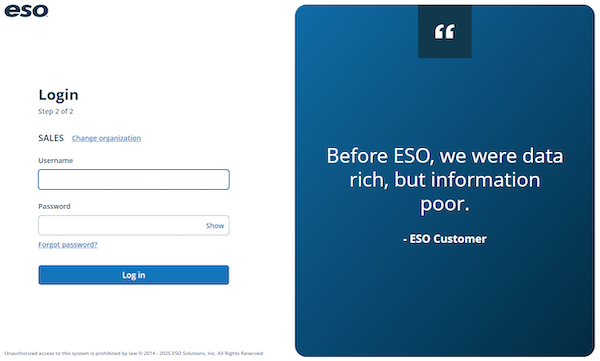
Fire Incidents | ESO NERIS Beta Program
NERIS Fire Incidents Beta Program
In early March, we launched our closed beta program, which allows a select group of agencies to access, train, and experience the brand new NERIS-compliant Fire Incidents. In turn, the agencies in the beta program are providing valuable feedback to help us refine and improve the application further. The beta program includes features such as progressive disclosure, rich text editing for narratives, and GIS integration for address fields. We have encouraged the agencies involved to include both administrators and field responders in the testing process to gather diverse feedback and ensure the application meets the needs of all users in their transition to NERIS.
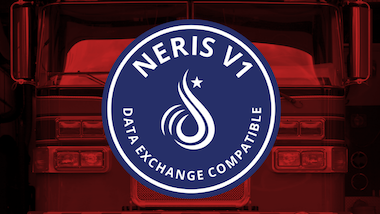
NERIS Data Exchange Compatibility Badge
We are proud to announce that ESO has officially received our NERIS Data Exchange Compatibility Badge, signifying that ESO Fire Incidents meets all new NERIS compliance requirements while maintaining ease of use, data accuracy, and intuitive reporting.
This badge signifies that you can feel confident in trusting ESO Fire Incidents to provide everything you need to smoothly transition to NERIS and stay ahead of the biggest change in fire reporting in the past 50 years. Moving forward, ESO will continuously enhance Fire Incidents while further integrating it with other applications within the ESO suite to ensure a comprehensive solution that continues to support the new NERIS standard while enhancing application capabilities and user experience.
EHR | iOS General Availability
EHR for iOS is now available to all, marking a major step forward for ESO. Designed to provide you with the proper tools to enhance patient care and quickly enter quality data, this latest release introduces Longitudinal Record (LR), Siri Integration, and Mobile to Mobile (M2M).
Built with the needs of first responders in mind, EHR for iOS offers a user-friendly interface, seamless integration with EHR Web and Windows Mobile, and robust security features to ensure patient data is protected.
Here are some key features to look out for:
- CAD & Cardiac Monitor Integration: The application supports integration with cardiac monitors and CAD systems, enhancing your ability to swiftly monitor and respond to patient needs. Supported cloud monitor integrations include Zoll Online (X Series), LIFENET System (LP 12, 15, and 35), and Philips IntelliSpace Corsium (Tempus ALS).
- Robust Security: EHR for iOS supports multi-factor authentication (MFA), Single Sign-On (SSO), and 6-digit Numeric PINs to support multiple crew members.
- Mobile Device Management: Agencies leveraging Mobile Device Management (MDM) to manage iOS devices in the field can now do so with a few additional steps.
- Medication Scanning: By using the device camera, patients’ medications can be added to their Medication list by scanning the prescription labels or lists of medications, saving your team precious time.
- Mobile to Mobile (M2M): Just like M2M is available with our Windows Mobile application, the EHR for iOS application supports the ability to send or receive data to and from a Windows Mobile or iOS device.
- Longitudinal Record (LR): Similarly to EHR for Web, EHR for iOS leverages our new Longitudinal Record feature to quickly look up and match patient information.
- Siri Integration: Activate Siri for hands-free entry of incident times and vital signs, as well as document flowchart treatments. It’s as simple as saying, “Hey Siri, capture pulse rate in EHR.”
Now available in the App Store, EHR for iOS has undergone rigorous testing and validation to ensure it meets the highest standards of performance and security, saving your team precious time in the field.
EHR | Stryker LIFEPAK 35 General Availability
Our latest integration with the Stryker LIFEPAK 35 monitor/defibrillator is now available for all and is designed to provide an enhanced user experience, boosted productivity, and access to the latest technologies. Thank you to the beta agencies who helped us ensure that this integration was ready for prime time.
Key Features of the LIFEPAK 35 Integration with EHR:
- Seamless Connectivity: Enjoy a user-friendly interface that makes it easy to connect Stryker LP 35 with ESO EHR. Experience improved performance that ensures smooth, uninterrupted data flow, allowing you to complete tasks more efficiently.
- Improved Patient Care: Focus on delivery of care with the ability to import data from the monitor to EHR, reduce documentation time, and improve your data’s accuracy.
- Dependability of Data: Use the strength of two trusted and dependable platforms in one high-quality solution.
Why Choose the LP 35 Integration?
Our integration with the Stryker LP 35 is designed to meet the needs of professionals who require reliable and efficient tools to manage their workflow. Whether you’re a responder in the field, an administrator, or a researcher, this integration offers you the functionality you need to be successful.
Patient Registry | Bulk Procedure Entry
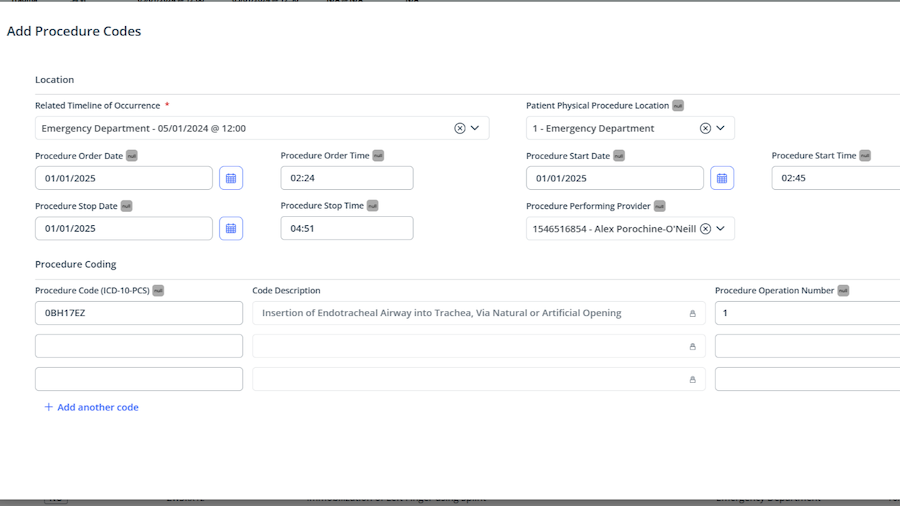
Through customer feedback and collaboration, ESO determined that enhancing bulk procedure entry was critical to the Patient Registry user experience. This update will significantly streamline daily operations by allowing your team to more efficiently manage and execute large volumes of procedures, reducing the administrative burden while improving workflow efficiency.
By automating routine tasks and enabling bulk processing, healthcare facilities can focus more on patient-centric activities, ensuring timely and accurate delivery of care. So far, we’ve already seen a 15% reduction in time on tasks and an 81% reduction in clicks to complete tasks. We hope that you find that this enhancement not only optimizes your resource utilization but also contributes to overall better patient outcomes and product satisfaction.
Patient Registry | FHIR Integration for Cerner

Building upon Patient Registry’s FHIR data integration with Epic, we extended the integration with Cerner to not only streamline your workflows but also enhance the overall efficiency and quality of your data. An ESO Admin page has also been launched that will allow facilities to self-configure their FHIR URLs and custom MRN identifiers.
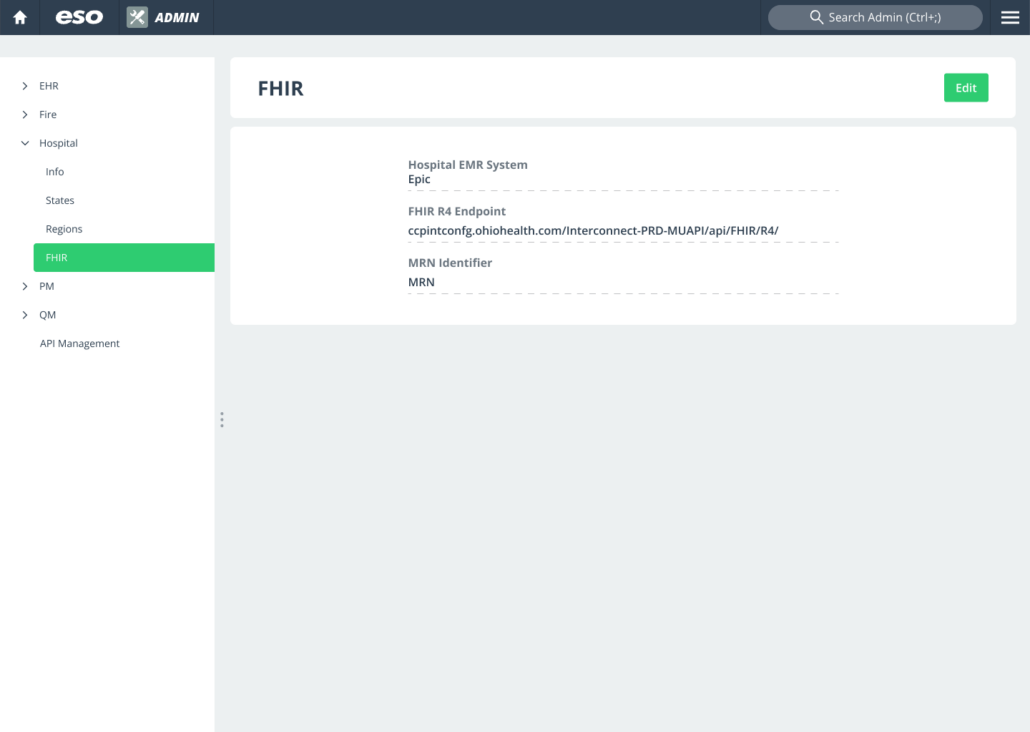
Stay tuned for more exciting updates on how the FHIR integrations will evolve and transform your Patent Registry experience!
Patient Registry | “No Bloods Given” Button
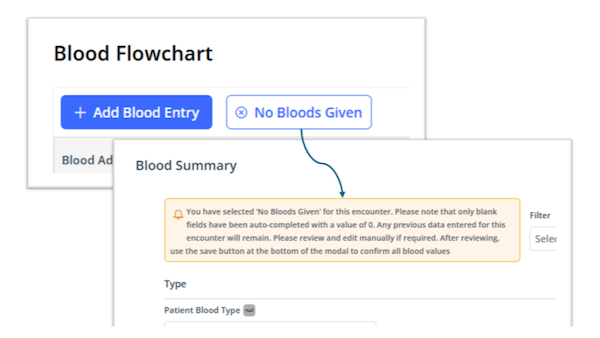
The new “No Blood” button feature on the “Blood” Flowchart section allows your team to directly interact with the “Blood Summary” modal without manually entering data field by field. This new update takes a process that originally took over 20 clicks down to just 2, saving your team vital time.
This feature was highly requested by Registry users who need to capture data for total blood and blood within 4 hours and has already been incredibly popular with users.
PM | Compensation (Payroll) Update
Development of the Compensation module is in full swing. This new module will cover payroll for volunteer, combination, and pay-per-call departments and can be used in conjunction with the Pay Rates feature. By enabling the Compensation module, organizations can integrate Fire Incidents into PM, along with creating and editing compensation definitions, adding and editing rules, managing employees, and exploring the pay period history page.
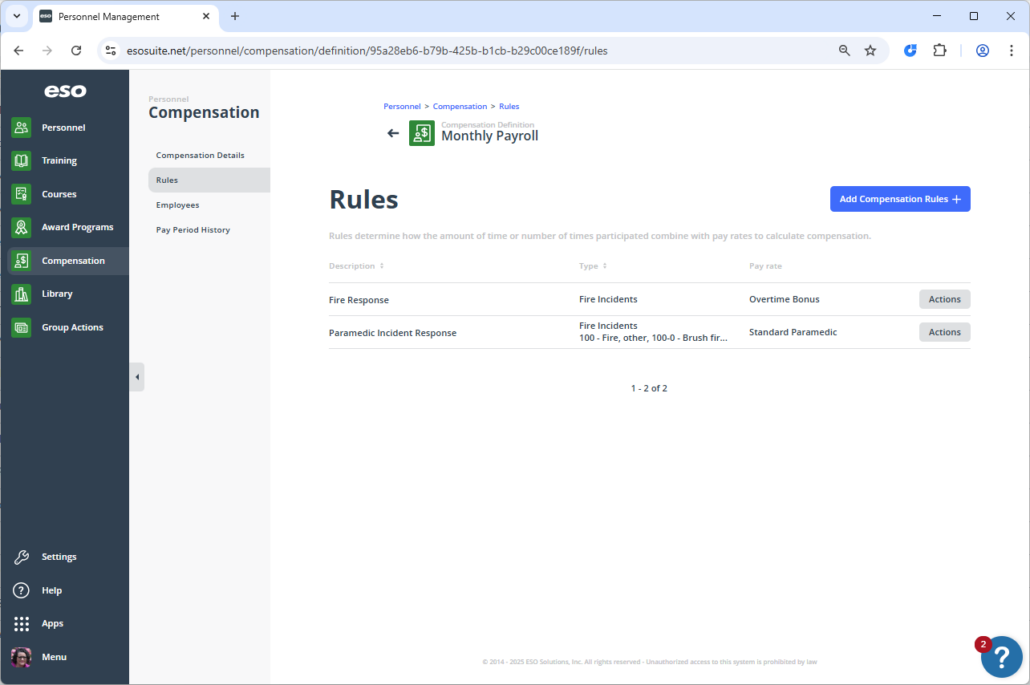
More exciting news: after our next release, your organization will be able to see live data on the pay period history page, view employees within the pay period, and dive into the calculation details, which means you can complete the entire cycle for rules based on Fire Incidents, right up to the export and finalization process. Stay tuned for more updates.
Assets | Preventative Maintenance Foundations
Asset Management has gone through several foundation updates to deliver a brand new end-to-end preventative maintenance functionality. Here are the updates that happened in Q1:
- Meter Readings in Equipment Profiles: Similar to what’s available in vehicle profiles, meter reading fields were added to the equipment profile to capture various readings.
- Maintenance Requests: When closing a maintenance request, you can now add current meter readings to the ticket, which will update the asset’s profile.
- Asset Spreadsheet Upload: Meter reading fields have been added to the upload spreadsheets to support importing current meter readings when onboarding to Assets.
These updates will allow you to enter meter readings in four different ways: by checklist submissions, maintenance requests, spreadsheet uploads, or direct edits to the asset profile.
The Maintenance Overview page has also been updated to support end-to-end preventive maintenance workflows. With the addition of Status, Complete Date, and Request Type columns, you can now quickly reference existing open requests and see whether a request was manually created or auto-generated.
Keep an eye out for the release of Maintenance Schedules, which will allow you to set recurring maintenance schedules based on odometer, engine hours, calendar, and more!
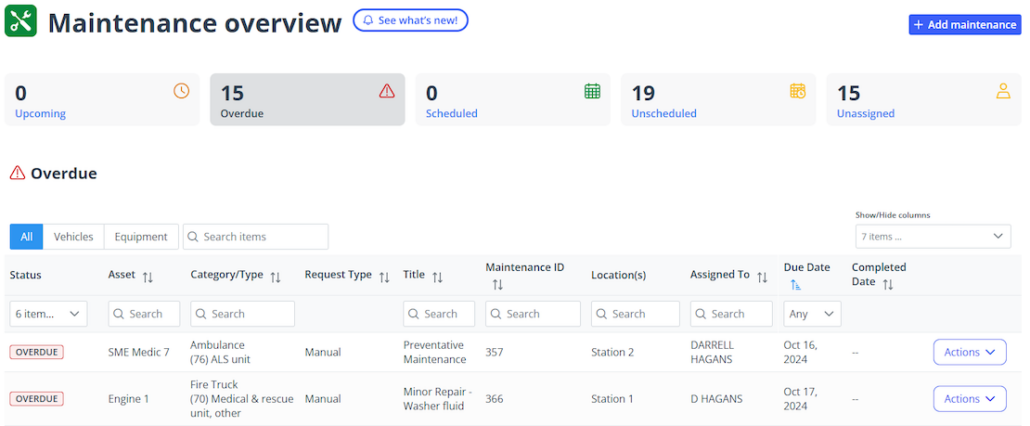
Data | Snowflake Direct Shares
ESO has released its latest data reporting and access capability – Snowflake Direct Shares. This new capability will allow you to seamlessly integrate ESO Suite reporting data into your own existing Snowflake account, as well as give you the capability to create customized queries and exports and combine ESO data with internal sources using your own data reporting tools. Eliminating the need for intermediary ETL tools, APIs, or other reporting platforms simplifies the data reporting ecosystem and reduces the management of additional credentials and access points.
Insights | Global Dashboards
A number of Global Dashboards were updated and released throughout Q1, but there are two groups of Dashboards we are particularly excited about:
EHR | WEMSIS Demographic Information Reporting Dashboards
A series of seven dashboards, the WEMIS Demographic Information Reporting Dashboards, are aimed at supporting WA customers who are required to report annual demographic data to WEMSIS. More information on the measures and submission can be found here.
State Repo NEMSIS 3.5 | California Core Test Measures
Five Global dashboard templates were released to support customers in CA regions and agencies by more accurately reflecting the specifications for the 5 CA core test measures for 2024 data (AIR-1, AIR-2, AIR-3, PED-4, & TRA-3). You can get more information here.
Cross-Product/ESO Suite | In-App Enhancements
In Q1, our UX and Personnel Management team launched our Pilot Ideas Portal in Personnel Management to make it even easier for our community to share feedback and gain insights into current product roadmap ideas. This portal is designed to enhance the collaboration process and make it easier for our product team to understand and solve our customers’ pain points. The pilot was a huge success with high adoption and engagement along with positive feedback. Last quarter alone, ESO received 2198 enhancement suggestions from our community, which is an increase of 33.4% from Q4!
Thank you for your continued hard work and dedication in helping us create tools to better support your team. We will continue to email you updates when viable ideas progress into the discovery, design, and development stages.
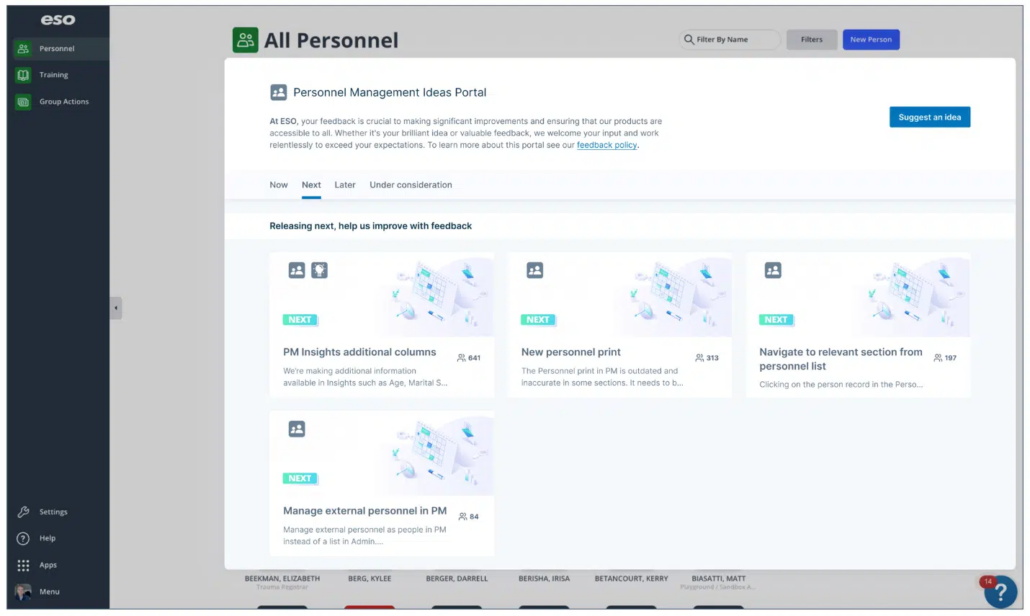
Stay turned for further rollout in the ESO Suite!
What to expect next
Here are a few more exciting enhancements currently in the works. Please stay tuned for release notes, but here’s a sneak preview of a few updates and enhancements we have planned:
EMS
- AI Generated Narrative for non-transport dispositions
- Additional availability in Windows mobile
- Our new iOS application
- Optional use of either SOAP or DCHARTE format
- NEMSIS critical patch for gender to maintain compliance with NEMSIS and presidential executive order
- New EHR Partner API
- Agency custom forms for beta
Fire
- NERIS
- GIS/Mapping for Properties Grid
- Inspections print and email updates
- Update to Hydrants for bulk actions
Shared Apps
- Preventative maintenance schedules
- General availability of compensation
Hospital
- Patient Registry has some exciting new features planned for Q2 (and beyond), including:
-
- An encounter dashboard for real-time reporting and operational workflow management.
-
- Patient summary export for generating templated reports for offline consumption.
-
- Integration with ACS to facilitate real-time encounter submissions.
State
- In Q2, we embark on a journey to transform the way State customers manage their providers, agencies, vehicles, and education with a new regulatory application. Leveraging the power of AI and development tools, we are poised to accelerate delivery, ensuring that our solutions not only meet but exceed your expectations.
Cross-Product / ESO Suite
- Dashboard will be mobile responsive
- The first release of our new Query Builder
- An Ideas Portal launch in all product resource centers
About Product Management at ESO
The ESO Product Management team creates the Product Roadmap, informing the products, features, and functionality we will build next. Through daily collaboration with support, sales, customer success, industry experts, and most importantly, customers like you, our team works hard to create the best apps possible for advancing our mission of improving community health and safety through the power of data.
Over the past year, we’ve invested in world-class tools that allow us to capture customer product feedback at scale and, in turn, make more informed roadmap decisions. These tools enable us to quickly test ideas in order to deliver features that are most valuable to you. We value your input and hope you continue to engage with us through our continuously expanding in-app capabilities.
The post (Q1/2025) ESO Updates: Quarterly Product Enhancements appeared first on ESO.
]]>The post 2025 ESO EMS Index appeared first on ESO.
]]>The post Emergency Services Are Evolving – So is ESO EHR appeared first on ESO.
]]>The time for this shift is undoubtedly now: Resources are limited, providers are burnt out, communities are changing, and call types and volume require new, innovative ways to respond.
Introducing technology from call to care: An innovative way forward
Launched in early 2025, the updates to ESO’s core EHR platform are designed to help organizations not only keep up with the industry’s changing demands but stay ahead of the curve through connected systems, higher quality documentation, increased personnel readiness, and more supportive revenue operations. These updates come following the integration of Logis’ Dispatch and Billing solutions. The powerful connections between dispatch, incident reporting, and health records mean agencies can improve financial outcomes, prioritize dispatch, and build a comprehensive view of patient care – all in one platform.
With everything our customers have come to love about ESO EHR – including the high-quality documentation, simplified reporting, and intuitive workflows – the application now includes:
-
- Longitudinal Record views
- Enhanced functionality to support MIH processes and encounters
- Critical Care workflows and forms
- Native iOS application
- ESO Insights with Global Dashboards and Benchmarking
Already an ESO EHR user? If you’re ready to explore these updates, please get in touch.
These upgrades to the EHR platform will allow your agency to:
Get a more dynamic, patient-centric view of your data
Instantly access vital patient data, including historical records during care, for a more holistic view of patients’ long-term health. Plus, visualize and leverage data across all product verticals with ease, so you can efficiently meet your changing needs.
Support Mobile Integrated Health or Community Paramedicine processes
With upgraded, real-time access to patient history, and streamlined, modern Mobile Integrated Health features, you can better support the emergent and non-emergent calls in your community.
Improve resource allocation
ESO EHR is fully interoperable, connecting to Computer-Aided Dispatch (CAD), Cardiac Monitors, Billing, and pre-hospital and hospital systems, so you can transfer patient care data across mobile applications. This not only streamlines care and tedious duplicative entry but also sets up smarter workflows for predicting where resources are best sent.
Provide care from anywhere
The iOS application for ESO EHR is a game-changer, with features such as speech-to-text, smarter multitasking, a scanning solution, and more – it also allows you to use the platform on any iOS device, even offline. Since your data is saved in real time, upon reconnection, you can be sure that no insights are lost in transit. Paired with the new Critical Care workflows, you can care for your most vulnerable patients regardless of location.
Improve overall outcomes
ESO Insights and comprehensive global reporting with benchmarks help your team quickly identify trends, gain visibility into areas of improvement, and track critical care performance.
Why do these updates matter?
Today’s patient-centric care relies on connected information across each stage of a patient’s experience. For cutting-edge EMS agencies today, documentation is a means to a mission-driven end: fully understanding your patients and resources to provide the best possible care to meet your community’s individual needs.
And most importantly, technology should evolve with a dynamic industry – which is why you’ll soon see even more new functionalities in EHR, including GenAI Narrative – an auto-generated narrative feature, additional customization, and even more interoperability in the future.
If you’re interested in upgrading to EHR and equipping your team with the tools they need to transition into this next evolution of their role, sign up for a free live demo.
The post Emergency Services Are Evolving – So is ESO EHR appeared first on ESO.
]]>The post Why Critical Incident Reporting Matters appeared first on ESO.
]]>Critical incident reporting metrics are designed to measure the events that have the most potential to be psychologically traumatizing for first responders and are closest linked to PTSD and suicide. While the list is not exhaustive and critical incidents can vary from person to person, their documentation is crucial for protecting your own team and further improving research for the entire industry.
Here are the nine psychologically traumatizing events (PTE) you should be documenting:
- Serious injury or line-of-duty death
- Suicide of a co-worker
- Death or serious injury to a child
- Prolonged failed rescue
- Multi-casualty incident disaster
- The victim is known to the responder
- Any incident where the personal safety of the responder is jeopardized
- Incidents with excessive media interest
- Any incident with a powerful emotional component
It’s important to note that nearly 79% of records did not mention the circumstances surrounding critical incidents, which means there is a major opportunity for improving documentation. This could be in part due to the fact there is still a stigma around mental health within first response.
So, what else can your organization do?
With the alarming rise in suicide amongst first responders, the tracking of critical incidents should be a top priority within your organization and is one of many steps you can take toward improving the wellbeing of your team. Below are some recommended best practices as outlined in the 2024 ESO Fire Service Index and 2024 ESO EMS Index.
- Cultivate a supportive organizational culture where team members feel comfortable reporting critical incident exposure. Put organizational procedures and zero-harassment policies in place to promote a positive atmosphere of respect, fairness, and employee appreciation.
- Documenting exposure to critical incidents is key. Enable incident tracking and take action when any events are reported. Ask clinicians how they prefer to be contacted when an incident occurs.
- Consult the 2022 Public Safety Officer Support Act, which provides line-of-duty benefits for first responders experiencing PTSD due to critical incident exposure.
- Since critical incidents can differ from person to person, provide training to your entire team based on the latest evidence for potentially psychologically traumatizing events to help them better recognize PTSD within themselves and their peers.
- Invest in training and continuing education on delivering death notifications to ease the stress associated with performing this difficult task.
- Ensure access to appropriate mental health resources. If possible, partner with local mental health clinicians who have experience working with first responders and consider establishing peer support teams.
It’s important to remember that everyone reacts differently to the same or similar incidents, so personalize treatment to each person’s individual needs. Finally, ensure your team has the right support resources, including the National Suicide Prevention Lifeline (1-800-273-TALK [8255]) and pocketpeer.org.
For more insights regarding improving your response to critical incidents, check out the 2024 ESO Fire Service Index and the 2024 ESO EMS Index.
The post Why Critical Incident Reporting Matters appeared first on ESO.
]]>The post (Q4/2024) ESO Updates: Quarterly Product Enhancements appeared first on ESO.
]]>Content Applicability by Product
| Building Blocks | EMS | Fire | Hospital | State |
| EMS | Shock Index | x | |||
| EHR | iOS Beta Release | x | |||
| EHR | Stryker LP35 Beta | x | |||
| EHR | MIH/Community Paramedicine Run Type | x | |||
| EHR | FLACC Pain Scale | x | |||
| EHR | GenAI Narrative Web Beta Release | x | |||
| Logis Dispatch | Voice Platform | x | |||
| Logis Dispatch | AVL Subscription API | x | |||
| Logis Billing | Automation and Integrations | x | |||
| Fire Incidents | NERIS Update | x | |||
| Hydrants | External API | x | |||
| Permits | External API | x | |||
| HDE | EMPI Matches | x | x | ||
| PM | Pay Rates | x | x | ||
| PM | New Classes Insights Dashboards | x | x | ||
| Activities | Edit Operational Tasks | x | x | ||
| Checklists | New Meter Reading Fields | x | x | ||
| Assets | Maintenance & Asset Profile Updates | x | x | ||
| Scheduling | Comp Time Enhancements | x | x | ||
| ODL | New PM and Assets Courses | x | x | ||
| Patient Registry | Onboarding Guide | x | |||
| Insights | Dashboards | x | x | x | |
| Insights | Data Synthesis, Validation and Accuracy tools (internal) | x | x | x | x |
| Cross-Product / ESO Suite | In-App Enhancement Feedback | x | x | x | x |
EHR | Shock Index
As part of our 2024 initiative to make Critical Care documentation more robust in ESO EHR, we’ve added Shock Index to Vitals in both Blood Pressure and Pulse Tiles. You can now automatically calculate Shock Index based off of the values you enter for Pulse and Systolic Blood Pressure.
EHR | iOS Beta Release
We’re excited to announce an early adopter preview release of our much-anticipated ESO EHR iOS application! This release will allow you to complete and sync all record fields to the web for validation and lock, while a second release happening later this month will let you do so in-app prior to syncing.
Stay tuned. We’re making the jump to general availability (GA) and adding new features such as CAD and Cardiac Monitor integrations, Longitudinal Record (LR), and Mobile-to-Mobile functionality.
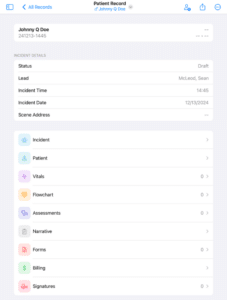
EHR | Stryker LP35 Beta
In Q4, we started beta testing the LIFEPAK 35, a brand-new ESO EHR cardiac monitor integration that receives transmissions through Stryker’s LIFENET API. The ability to import data from the monitor to ESO EHR reduces documentation time while improving the accuracy of your data, allowing you to better focus on the delivery of care. This new integration is now available to all ESO EHR users.
As technology modernizes in the field, ESO EHR will continue to advance its integrations to better support your needs, including the upcoming capability of importing 15-lead ECG waveform images.
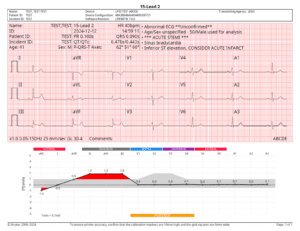
EHR | MIH / Community Paramedicine Run Type
Mobile Integrated Health (MIH)/Community Paramedicine has been added to ESO EHR to better support the unique workflow requirements of agencies that document MIH/CP visits. This run type and its required fields will streamline state submissions by removing many of the configurable validation requirements while giving you the tools necessary to manage your MIH/Community Paramedicine program’s unique documentation and reporting needs.
EHR | FLACC Pain Scale
The FLACC Pain Scale was part of our Critical Care initiative in 2024 and will be available in the Pain section within Vitals in ESO EHR. You can use it to directly document and upload FLACC Pain Scores and final score data for non-verbal patients into ESO Insights for easier reporting.
EHR | GenAI Narrative Web Beta Release
Currently in beta, the new GenAI Narrative Web feature for ESO EHR allows you to request an auto-generated Narrative on a PCR, streamlining data entry while improving focus on care. The first phase of our Auto-Generated Narrative uses the DCHARTE format, which allows you to request AI-generated narratives for Transport records with a “transport by this EMS unit” disposition.
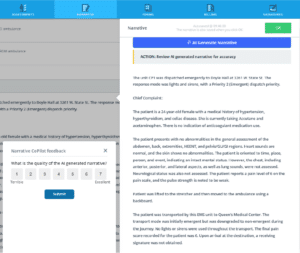
Our beta period will extend through the beginning of February. So far, customer feedback has been promising, and we will continue to collect and incorporate feedback throughout this period. This feature will be available to all customers on ESO EHR before Wave 2025.
Logis Dispatch | Voice Platform
A complete rewrite of the Logis Voice platform has been finalized and is now live with the first customer! The rewrite features a complete architectural makeover, client-side experience, and full ESO Chat functionality. Support for various phone systems will also be included in an upcoming phase.
Logis Dispatch | AVL Subscription API
The Logis Dispatch IDS API now includes the ability to subscribe to Automatic Vehicle Location (AVL) feeds. This enables you to perform live updates through webhooks in any system integrated into Logis Dispatch.
Logis Billing | Automation and Integrations
The ESO team was hard at work adding more automation and logic to the Billing solution, including:
- A new Payor Matrix feature that acts as a payor decision tree will further reduce the headache of incorrect payor denials. New integrations were added to enable bi-directional interactions with WayStar for insurance verification and discovery and Artiva for third-party patient invoice management. You can also now streamline frequent tasks by assigning hotkeys to your ten most-used functions.
- New configurations allow you to assign and report on workers’ claims for the Office of Worker’s Compensation (OWCP), assign provider numbers (Taxonomy) to service types to help reduce backend denials related to the services provided, and automate narrative generation and emergency statement form assignments based on payor rules and regulations through newly added narrative templates.
- Lastly, you’ll find updated logic that helps you identify and accept exceptions presented on manual 835 flat file imports, enhanced task views that assist with queue management and follow-up project preparation, updated contractual adjustments related to bundles and denials, and an automatic printing of ePCRs with paper CMS 1500 (HCFA) forms.
Fire Incidents | NERIS Update
Since late 2023, ESO has been actively working with FEMA and their contractor, UL (FSRI), to help you prepare for the transition to the National Emergency Response Information System (NERIS). In Q4 2024, FEMA delivered the final v.1 of the Phase 1 schema and a draft of the validation rules for incident reporting, which allowed us to validate some assumptions in our planning and adjust for future expansions of the rules. Our development team has been hard at work implementing our solution for NERIS with the goal of having a basic NERIS-compliant version of Fire Incidents ready for beta testing by the end of Q1 2025.
This basic version will not include auto-import configuration and integrations with CAD and EHR will not be added until upcoming releases in 2025. For more information, visit our FAQs About NERIS.
Hydrants | External API
Your Fire Data API subscription now includes a new external, bidirectional Hydrants API! This API provides direct, real-time access to hydrant data and allows for third-party integrations that make it easier to share your ESRI account with your water department and display shared hydrant and hydrant task data.
Hydrant records, including location, status, inspection and maintenance history, task scheduling, etc., can now be updated using the available API endpoints. To learn how to use the Hydrants API, head to the ESO API Developer portal.
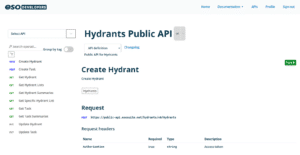
Permits | External API
A new external, bi-directional Permits API is now included in your Fire Data API Subscription. This API provides direct, real-time access to permit data, including type, status, fee, applicant, etc., which you can then update through available API endpoints. Head to the ESO API Developer portal to learn how to use your Permits API.
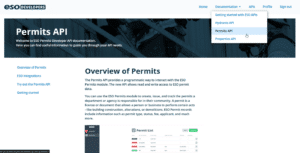
Public APIs allow us to incorporate the third-party services that improve your current ESO offerings and, in turn, improve your day-to-day workflows.
HDE | EMPI Matches
We have enhanced HDE EMPI matching to ensure that all units responding to an incident now qualify for an EMPI match rather than just a singular EMS record, which is what was previously eligible. This update guarantees that each of your responding units will be processed through our EMPI system, which is particularly crucial in regions with high first responder EHR utilization, such as Napa Valley and Monterey County in California and Providence Healthcare in Washington.
PM | Pay Rates
You can now track individual pay rate history on both PM Basic and purchased PM by heading to team members’ personnel records located in the Pay Rate section of the new Work Performance tab. You can also manage the complete list of hourly and flat rate pay rates by heading to PM > Settings. To enable this functionality, visit PM > Settings > Enable Add-Ons.
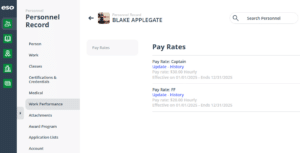
Pay Rates are available for any customer and are a prerequisite for the upcoming Compensation module. This new module will allow payroll calculations for volunteer and combination departments, as well as departments who have a pay-per-call model where personnel are paid by response.
PM | New Classes Insights Dashboards
Two new dashboards are available in Insights for PM! “Training Sessions and Duration by Personnel” is a global dashboard for customers who do not use credit hours and points for training classes and would prefer to calculate and record time based on session length.
The second dashboard, “PM – Classes – Quality Control,” will allow you to identify sessions with missing information (such as credits, instructors, or attendees) through a new quick selector bar graph and summary tables.
Activities | Edit Operational Tasks
This long-awaited Activities improvement will allow users with the appropriate security permissions to edit the fields of any completed operational task, including status. An audit trail located in the record will capture all changes made.
Checklists | New Meter Reading Fields
Based on your feedback, two additional meter reading fields have been added to Checklists: Aerial Hours and Generator Hours. These new options are now included in the editing process and, if enabled, will be available to your crew during checklist submissions.
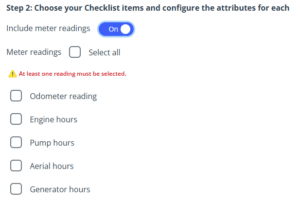
Assets | Maintenance & Asset Profile Updates
Several Asset updates were made in Q4, setting the stage for new Preventive Maintenance features coming in early 2025. Vehicle and equipment profile pages will now feature meter reading fields that can either be manually updated or automatically updated through Checklist submissions. We’ve also improved data storage to better support your Preventive Maintenance reminders and overall reporting experience.
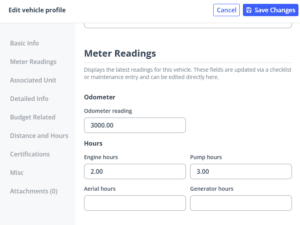
Meter reading fields have also been added to the Maintenance Request, along with view-only Created By and Created Date/Time fields, and the ability to set a vehicle back as in-service after the request is completed.
Scheduling | Comp Time Enhancements
Based on your feedback, administrators can now disable Schedule Conflicts for the Comp Time and Accrued Comp Time item types. This will allow schedulers to reflect the comp time used or accrued by employees while having a standard paid shift on the schedule.
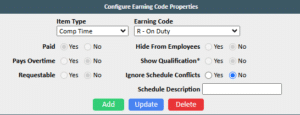
ODL – New PM and Assets Courses
Keep an eye out for two new On-Demand Learning (ODL) courses. “Personnel Management – Basic Setup and Use” is a refresh to the PM Basic course and is broken down into 14 short video modules designed to help you quickly find any information you need while making content more accessible. “Assets – Location Management” gets admin users up to speed on new Location Management features while also teaching them how to create, manage, archive, and organize locations and sublocations in Assets.
Insights | Dashboards
Our designers have been very busy this quarter building 48 new dashboards across the entire ESO Suite! Here’s a quick breakdown by product:
| Related Application | Number of New Dashboards |
| Patient Registry | 38 |
| Fire Incidents | 5 |
| Trauma Repository | 3 |
| EHR | 2 |
Cross-Product / ESO Suite | In-App Enhancements
In Q4, ESO received 1,646 enhancement suggestions from our community, and we have triaged and replied to 80.9% of those suggestions. We will continue to email you updates when viable ideas progress into the discovery, design, and development stages.
Our team worked on the next evolution of improving feedback throughout our software design and development process to ensure we are building exactly what your teams need. Our new Ideas Portal will be under tabs and mirror our Roadmap’s design and development stages:
- Now = Newly released features and updates
- Next = Works in progress with a delivery timeline
- Later = Ideas that are committed to the roadmap, but the timeline remains unknown
- Under Consideration = Ideas being actively investigated for feasibility
Look out for our pilot launch in Personnel Management early in Q1.
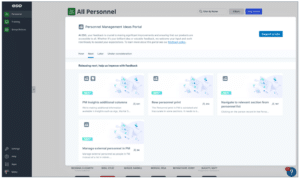
What to expect in Q1/25?
We have a few more exciting improvements in the works for Q1 2025. Please stay tuned for release notes and the next product blog, but here’s a sneak preview of upcoming updates and enhancements:
EMS
- EHR iOS GA
- Physio LP35 Integration GA
- Longitudinal Records for iOS and Windows Mobile
- EHR Web AI Generative Narrative – 1st Release
Fire
- GIS/Mapping (Properties Grid)
- Hydrants Bulk Actions
Shared Apps
- Scheduling – Shift Swap Refresh
- Assets – Preventive Maintenance Foundations
- PM – Compensation (Payroll for Vol/Combo) Phase 1
Hospital
- Compliance Matrix Tooling enhancements
- Cerner FHIR Integration
Cross-Product / ESO Suite
- A brand-new login screen and features
- Launching in early Q1, the Resource Center for Personnel Management will feature an ‘Ideas Portal’ pilot that will share ideas currently in various stages of design and development. To access it, click on the red notification in the Personnel Management Resource Center, which you can locate by clicking on the blue question mark in the bottom right-hand corner.
- If the ‘Ideas Portal’ pilot is a successful means of gaining more valuable feedback, we plan to launch a portal for each of our Resource Centers by the end of Q1. Please check it out and give us feedback on the value of the ideas presented.
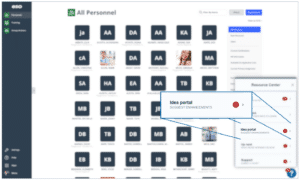
About Product Management at ESO
The ESO Product Management is responsible for creating the Product Roadmap, which outlines what products, features, and functionalities we will build next. Through daily collaboration with support, sales, customer success, industry experts, and, most importantly, customers like you, our team works hard to create the best apps possible to advance our mission of improving community health and safety through the power of data.
Over the past year, we’ve invested in world-class tools that allow us to capture customer product feedback at scale and, in turn, make more informed roadmap decisions. These tools enable us to quickly test ideas to deliver the most valuable features to you. We value your input and hope you continue to engage with us through our continuously expanding in-app capabilities
Want to look at the progress made on the ESO Product Roadmap in 2024? Check out the three previous ESO Updates Quarterly Product Enhancements blog posts below.
The post (Q4/2024) ESO Updates: Quarterly Product Enhancements appeared first on ESO.
]]>The post Year in Review: The Impact of the ESO Community in 2024 appeared first on ESO.
]]>It is with great pride that we’ve watched these organizations redefine what’s possible in first response throughout the year. From protecting the mental health and safety of first responders to providing care in underserved areas to empowering the next generation of nurses, the stories below highlight the incredible impact made by our community in 2024.
How Ute Pass’ MIH Program Centers Care Around the Patient
Serving over 500 square miles in rural Colorado, Ute Pass Regional Health Service is using community paramedicine programs to improve healthcare access for underserved populations. By focusing on preventive care and data-driven insights, the agency is lowering costs and improving outcomes.
Read the blog or watch the video to get the full story.
Addressing Violence in EMS
Despite being driven by a desire to provide a service to their community, first responders are met with an increasing amount of violence in their day to day — a lot of which goes unreported due to its normalization in the field. Elizabeth Donnelly, PhD, MSW, MPH, NREMT, Associate Professor at the University of Windsor and Co-Principal Investigator of the Violence in Paramedicine Research Group, shares insights from years of research and frontline experiences, advocating for strategies like incorporating reporting tools and promoting a safer work environment for paramedics
For more information on the work Dr. Donnelly and the Violence in Paramedicine Research Group are doing and to learn how we can create safer working environments for EMS professionals, visit www.protectparamedics.com.
Medavie’s Mobile Integrated Healthcare solution
Based in Canada, Medavie Health Services uses Mobile Integrated Healthcare (MIH) programs to deliver primary care and mental health support directly to patients, especially in rural areas. By using data to identify where care is needed most, they tailor their programs to address the unique needs of their communities.
Transforming Community Safety
Trevor Wilson, Division Chief of Planning at the Indianapolis Fire Department understands that when it comes to community safety, a good offense is the best defense. In the past six months, he’s used his organizational insights to reduce emergency incidents in his at-risk neighborhood by an incredible 75%.
Shaping the Future of Nursing
Shawntay Harris, President and CEO of Eminent Healthcare Resources Consultants and the President of the Texas Emergency Nurses Association is passionate about shaping leaders in the field of nursing. Learn how she’s working with organizations to not only retain nurses but help them thrive in their careers.
Why Cook Children’s Medical Center Chose ESO Patient Registry
When it comes to providing the best trauma care, Cook Children’s Medical Center knows that having timely, reliable data is vital. ESO Patient Registry streamlined their collection process while reducing errors, improving the patient experience along the way.
Children’s Hospital Colorado: Improving Care While Saving $40k
The Children’s Hospital Colorado team needed a faster way to exchange patient data, as their manual process often took two to three days. They implemented ESO Health Data Exchange (HDE), reducing that process to just a few minutes. By using ESO HDE, the hospital strengthened relationships with EMS partners, improved patient care, and saved $40,000 annually.
Looking Ahead
Thank you for taking the time to reflect on 2024 with us. We are so incredibly proud of the accomplishments our ESO community has made in the last year and look forward to seeing how their work shapes the future of health and safety in the years to come.
There’s a lot of other achievements and big ideas that happened at ESO in 2024. To read more on the product innovations and research that made us most proud, check out the blog posts below.
Year in Review: ESO Research and Data That Shaped 2024
Year in Review: Product Innovation and Progress from 2024
The post Year in Review: The Impact of the ESO Community in 2024 appeared first on ESO.
]]>